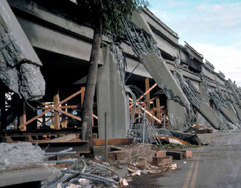Public procurement takes a turn worthy of note
By Mary Scott Nabers | 8.23.2019
Some seasoned government contracting firms have spent decades studying ‘best practices’ associated with winning new business. They know exactly what it takes, and because of that, they incur less risk when pursuing projects. These firms also win lots of government business.
Other firms, however, are not quite as knowledgeable. They know enough to be successful occasionally, but not consistently. It’s important for companies that compete in both the public and private sector to remember that government procurements are structured and evaluated differently. And, it’s also important to remember that public procurements allow bidders to be eliminated for multiple reasons that are often easily corrected.
Interestingly enough, the procurement world is currently experiencing significant new trends. If ever there were a time to know everything possible about government procurement and to carefully vet opportunities, it is now.
An abundant, perhaps historic, amount of upcoming public projects will attract substantial interest. Funding is available from diverse sources, needs are critical, and public officials are searching for contracting partners for projects with immediate timelines. That’s the good news for companies interested in capturing this new business. The bad news, unfortunately, is that the high demand and the immediate needs create an environment that is less desirable for public officials.
The problems are diverse. Many companies struggle to find skilled workers. Other companies, especially subcontractors, are so busy they cannot take on new projects. Private-sector investors can select from dozens of upcoming projects and will compete to invest in only the ones that offer exceptional benefits. And, public officials who work hard to get voter approval for funding new projects must launch projects immediately because prices are escalating so quickly. Projects that were designed months ago with cost projections that did not factor in new trade tariffs will not represent inadequate funding.
As public procurement become more difficult, rebids become more common. Examples of recent less-than-successful, yet costly, procurements offer lessons worthy of note.
In Eastmont, Washington, the school district had lined up funding and issued a solicitation to select a company to build 20 new classrooms, four new cafeterias, and other smaller projects. The work had a projected cost of about $20 million. To the surprise of school officials, there were no bidders at all. While officials work to draft another solicitation, it appears that companies expected to bid did not participate because of so many other opportunities and a shortage of skilled subcontractors.
Trying to avert a similar situation, officials in Butler County, Ohio, will design an upcoming $10 million project a bit differently to ensure ample competition. They will break the transportation services project apart so that companies can compete for various parts of the contract rather than all of it. In the past, the transportation services contract was held by one company but officials feared too little competition for such a large project. Commissioners felt smaller pieces of the project would attract more competition.
Another problem is the rising cost of project delivery. In the past, public entities could pass bond packages for funding authority but wait for months before launching projects. Those days are over. Delaying a project today will result in escalating costs.
Elmira, New York officials unanimously rejected the only bidder for a much-needed downtown revitalization project recently because there was no other competition. And, the only bidder submitted a proposal higher than the available funding. A similar situation occurred in Warren County, Iowa, when officials rejected all bids after they came back about $7 million over the funding amount that voters approved in 2018. The plan had been to construct a new justice center and courthouse facility. The project had gone through all the planning phases, a project cost had been estimated, and the only thing left to do was to select a private-sector partner. Officials will now either rebid a scaled down version of the project or find additional funding.
In Wichita Falls, Texas, city officials rejected bids for a hike and bike trail when costs far exceeded funding that voters had approved. A similar situation occurred in Lehigh County, Pennsylvania, when bids for a school renovation project came in millions over the earlier estimated cost of the project. Officials at Lehigh are revising the project and prioritizing parts of it that must be rebid soon.
One last interesting example of a frustrating and failed procurement occurred in Buffalo, New York. The city’s Urban Development Corporation issued a solicitation and reminded bidders of the importance of including small and minority firm participation. The project called for a 25 percent set-aside for minority contractors and 5 percent for women-owned firms. None of the five contracting bidders even came close to fulfilling those requirements and said that it was not possible to find these types of subcontractors.
Contracting opportunities are abundant, and demand is great. However, the attention of public officials and private-sector contenders will define winners and losers.
Mary Scott Nabers is president and CEO of Strategic Partnerships Inc., a business development company specializing in government contracting and procurement consulting throughout the U.S. Her recently released book, Inside the Infrastructure Revolution: A Roadmap for Building America, is a handbook for contractors, investors and the public at large seeking to explore how public-private partnerships or joint ventures can help finance their infrastructure projects.






 RSS Feed
RSS Feed